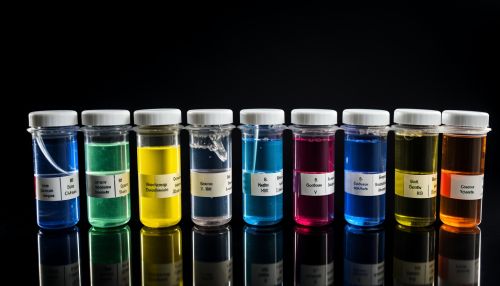Water Quality
Introduction
Water quality refers to the chemical, biological, and physical characteristics of water. It is a measure of the condition of water relative to the requirements of one or more biotic species and or to any human need or purpose. It is most frequently used by reference to a set of standards against which compliance, generally achieved through treatment of the water, can be assessed. The most common standards used to assess water quality relate to health of ecosystems, safety of human contact, and drinking water.


Importance of Water Quality
Water quality is important not only for human consumption, but also to maintain the ecological integrity of freshwater systems. Poor water quality can pose a health risk for people and ecological health risks for aquatic and terrestrial ecosystems. Water quality is determined by assessing three classes of attributes: biological, chemical, and physical. There are standards of water quality set for each of these three classes of attributes. The national and international standards for drinking water quality are typically set by governments or by international standards. These standards usually include minimum and maximum concentrations of contaminants, depending on the intended purpose of water use.
Biological Attributes
Biological attributes refer to the microbial and biological activity in the water. This includes bacteria, algae, viruses, fungi, and the presence of other organisms such as insects and fish. The presence of certain species of bacteria, such as E. coli, can indicate fecal contamination of water. The presence of other bacteria, such as Salmonella, can indicate contamination with pathogens. The presence of certain types of algae can indicate nutrient pollution, which can lead to harmful algal blooms.
Chemical Attributes
Chemical attributes refer to the chemical composition of the water. This includes the concentration of dissolved oxygen, pH, hardness, metal content, and the presence of other chemical contaminants. The concentration of dissolved oxygen is a key indicator of water quality, as many aquatic organisms require oxygen to survive. The pH of water can affect the solubility and toxicity of chemicals in the water. The hardness of water is a measure of the concentration of calcium and magnesium ions, and can affect the ability of water to form foam and carry soap. The presence of metals in water can be toxic to humans and aquatic life. Other chemical contaminants, such as pesticides, can also be harmful to humans and the environment.


Physical Attributes
Physical attributes refer to the physical properties of the water. This includes temperature, color, turbidity, and odor. The temperature of water can affect the ability of water to hold oxygen, as well as the metabolic rate of aquatic organisms. The color of water can indicate the presence of organic material, metals, or other contaminants. Turbidity, or the cloudiness of water, can affect the ability of aquatic organisms to find food and can block sunlight from reaching underwater plants. Odor can indicate the presence of certain contaminants, such as hydrogen sulfide.
Water Quality Standards
Water quality standards are set by regulatory bodies and are used to assess the health of water bodies and the effectiveness of water treatment processes. These standards can be based on the biological, chemical, and physical attributes of water. Standards can vary depending on the intended use of the water. For example, the standards for drinking water are typically more stringent than those for recreational water.
Water Quality Testing
Water quality testing is the process of analyzing water samples to assess the biological, chemical, and physical attributes of the water. This can be done in a laboratory or in the field using portable testing kits. The results of these tests can be compared to water quality standards to determine if the water is safe for its intended use.


Water Treatment
Water treatment is the process of removing or reducing the concentration of contaminants in water to meet water quality standards. This can involve physical processes, such as filtration and sedimentation, chemical processes, such as disinfection and coagulation, and biological processes, such as aerobic and anaerobic digestion.
Impact of Water Quality on Ecosystems
The quality of water in a given environment can greatly impact the health of the ecosystem. Poor water quality can lead to a decrease in biodiversity, an increase in disease, and changes in species behavior. In addition, poor water quality can affect the physical characteristics of a water body, such as its temperature and clarity, which can in turn affect the organisms that live there.
Impact of Water Quality on Human Health
Poor water quality can also have a significant impact on human health. Contaminated water can lead to a variety of health issues, including gastrointestinal illness, reproductive problems, and neurological disorders. In addition, certain contaminants in water can cause long-term health effects, such as cancer.
Conclusion
Water quality is a critical aspect of maintaining healthy ecosystems and ensuring the availability of safe drinking water. Regular monitoring and testing of water quality, along with effective water treatment processes, can help to ensure that water bodies remain healthy and that water is safe for human consumption.
